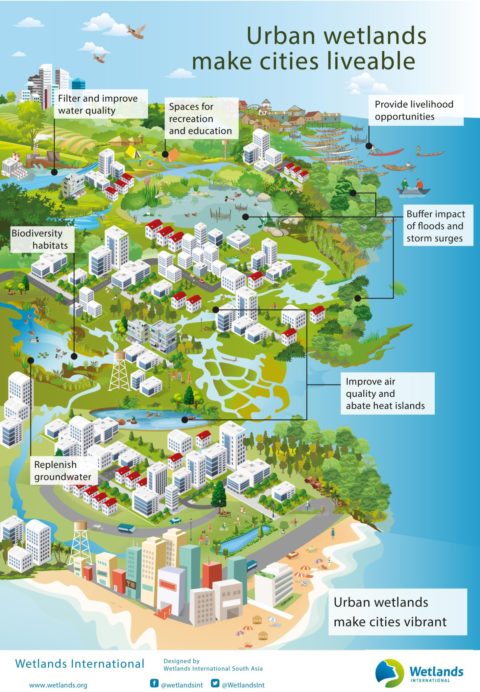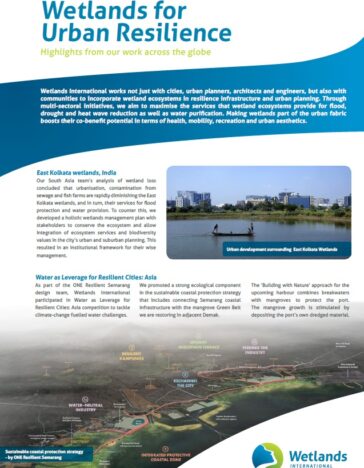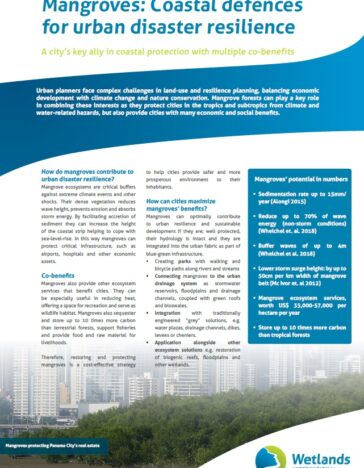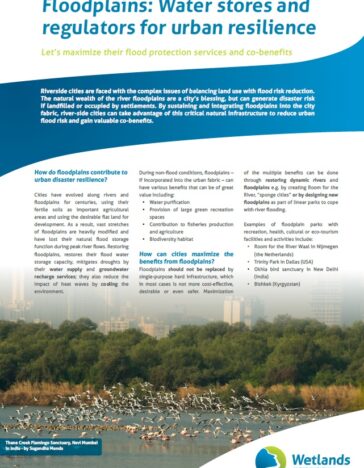Building Urban Resilience with Nature
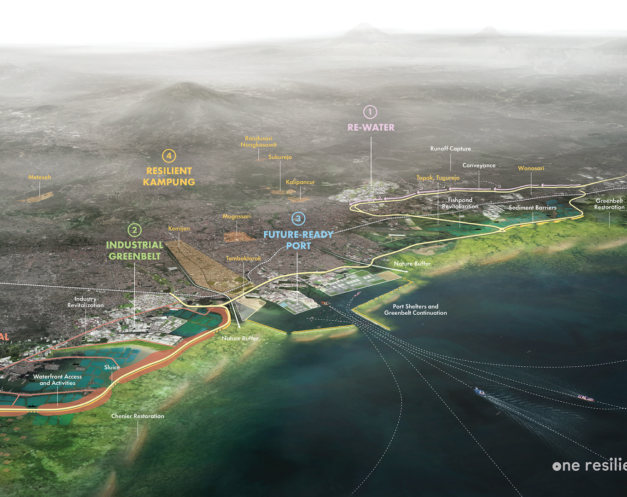
At Wetlands International, we are working on leveraging nature to transform cities into safer and more prosperous environments for tomorrow. As cities are increasingly challenged by rapid urbanization, population growth and the impacts of land degradation and climate change, they are in the need of finding adequate solutions for sustainable city development.
As most of this development is taking place in river-side and coastal areas the rapid loss of valuable wetland ecosystems makes our cities increasingly vulnerable to the impacts of extreme weather events and climate change. We strongly believe, if we increasingly shift towards the implementation of blue-green infrastructure in cities, we can achieve more resilient and sustainable city development in the future.
The Importance of Wetlands for Urban Resilience
As ecosystems – such as floodplains, marshes, mangroves and seagrass – are degraded, the surrounding cities and regions become increasingly prone to extreme weather events and challenged by environmental stressors such as water shortage, urban heat waves, land subsidence and drought.
Wetland ecosystems are critical buffers against extreme climatic events. On the seaside coral reefs, sandbanks and barrier islands shelter the coastline from the forces of the sea. In the intertidal zone mangroves, seagrass and salt marshes build up soils by accumulating sediment and organic matter, thereby reducing the effects of sea-level rise. Their dense vegetation also minimises damage from waves, reduces erosion and in some cases reduces storm surge effects.
Building with Nature offers major opportunities to re-integrate ecosystems as critical climate buffers in urban planning and design:
• Natural hazard protection: wetlands protect from different extreme weather events such as floods, storm surge, erosion and heatwaves
• Water management: Inland, healthy rivers and associated floodplains and marshes can store large quantities of water and replenish aquifers, thereby reducing harmful flooding and soil subsidence but also buffering drought risk in dry seasons
• Climate Change Adaptation & Mitigation: wetlands are ecosystems that provide a long-term solution in adapting to climate change but also store high amounts of carbon emission
• Citizens engagement: Integrating wetlands in urban environments creates liveable environments for citizens for recreation and reconnecting with nature
• Economic activities: Besides tourism, wetlands are valuable for biodiversity and support fisheries
Making wetland conservation and rest an integral part of urban development, alongside other measures such as the construction of water infrastructure, roads, housing and industry, creates liveable and sustainable cities that are resilient in the face of climate change.
Our experience from projects in both developed and developing countries clearly shows: Building with Nature works! There is a need for public and private partners to team up in innovative partnerships to ensure that the approach becomes fully engrained in urban development trajectories.
Further reading:
– Wetlands for a Sustainable Urban Future, Sarovar Newsletter Special Issue
– Joint Commitment with One Architecture & Urbanism
Blogs
Making Chennai climate-resilient: The Water as Leverage initiative
Blue-green infrastructure: from a single measure to city-wide network
Case Studies
– Panama City case study
– Semarang case study
– Peru case study
Events
– Expo Agua (ESP)

